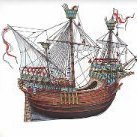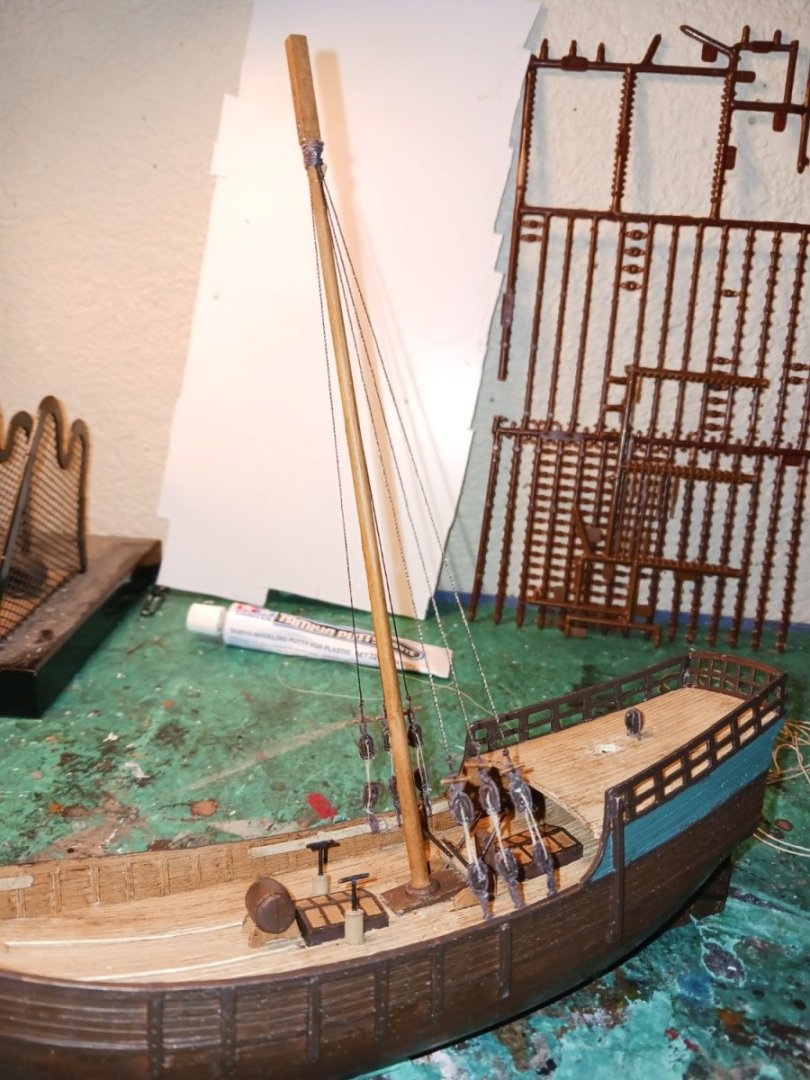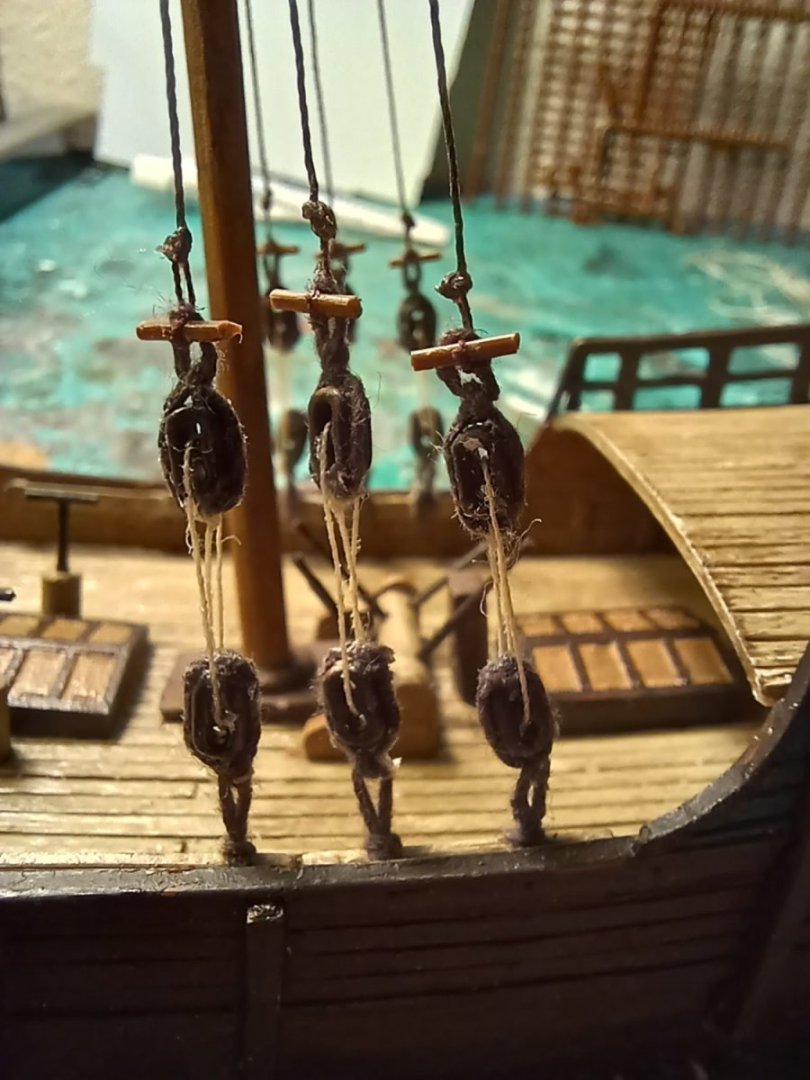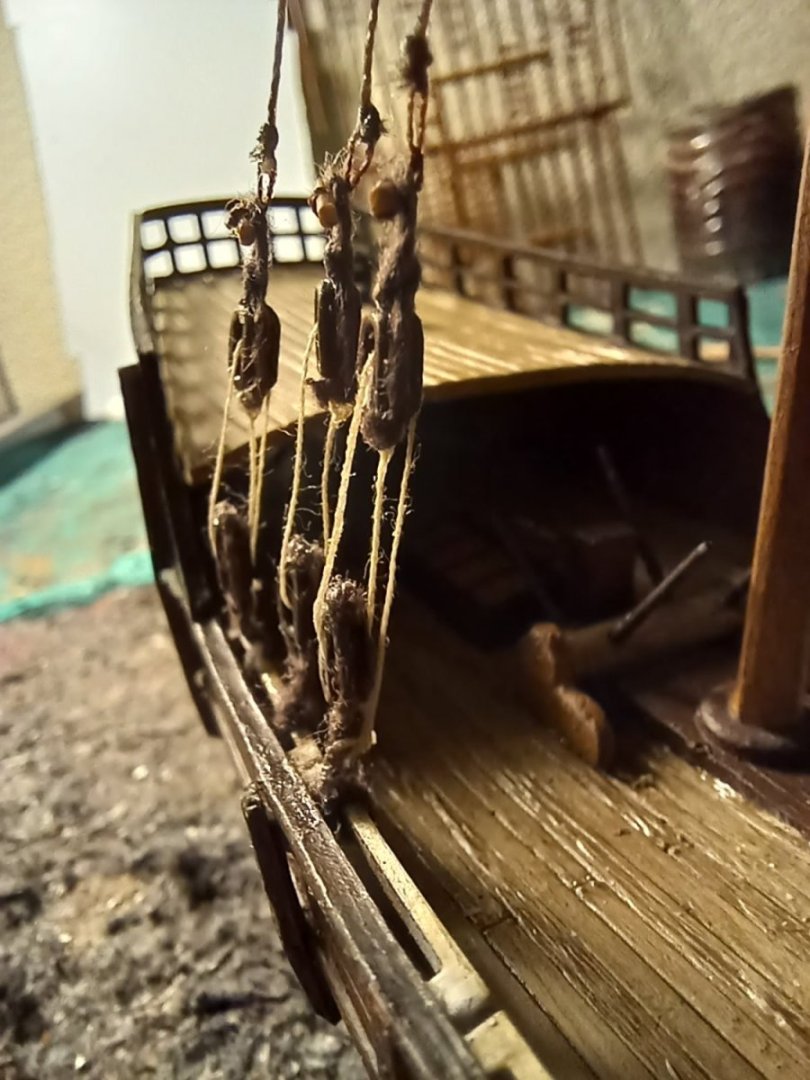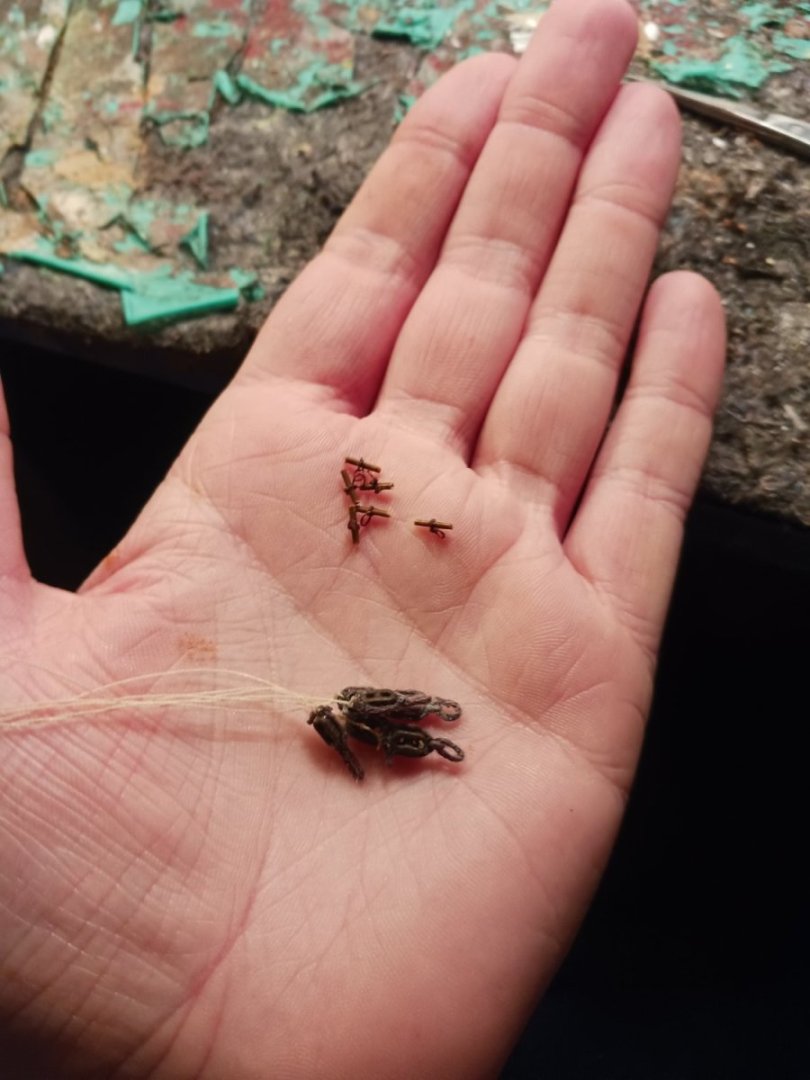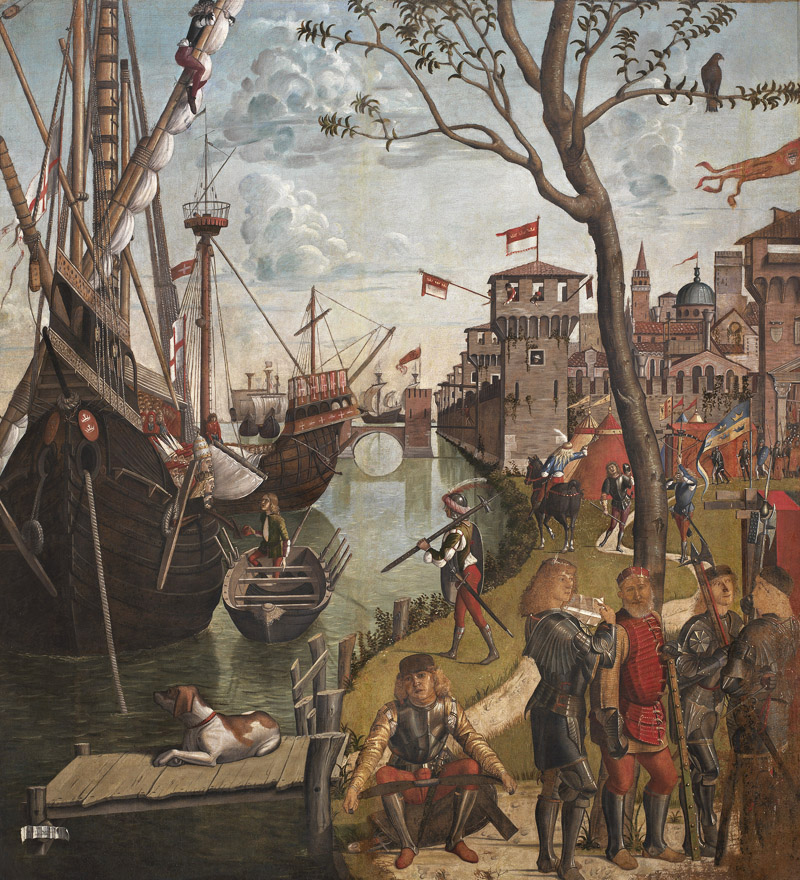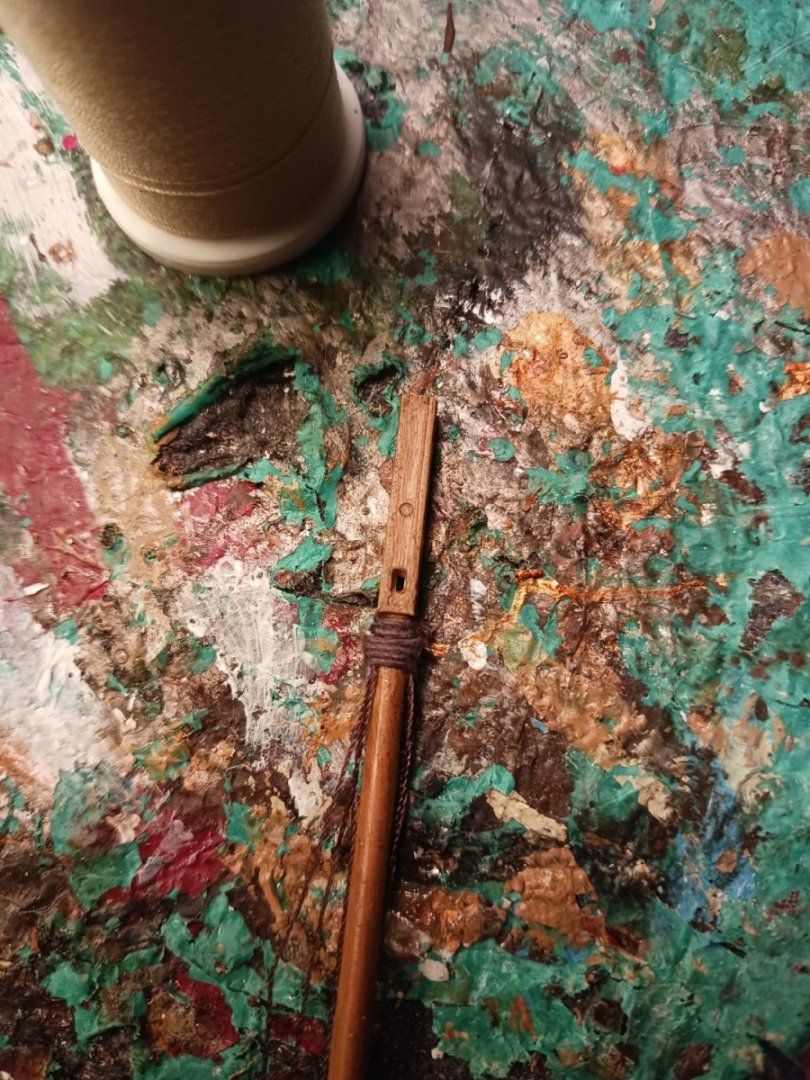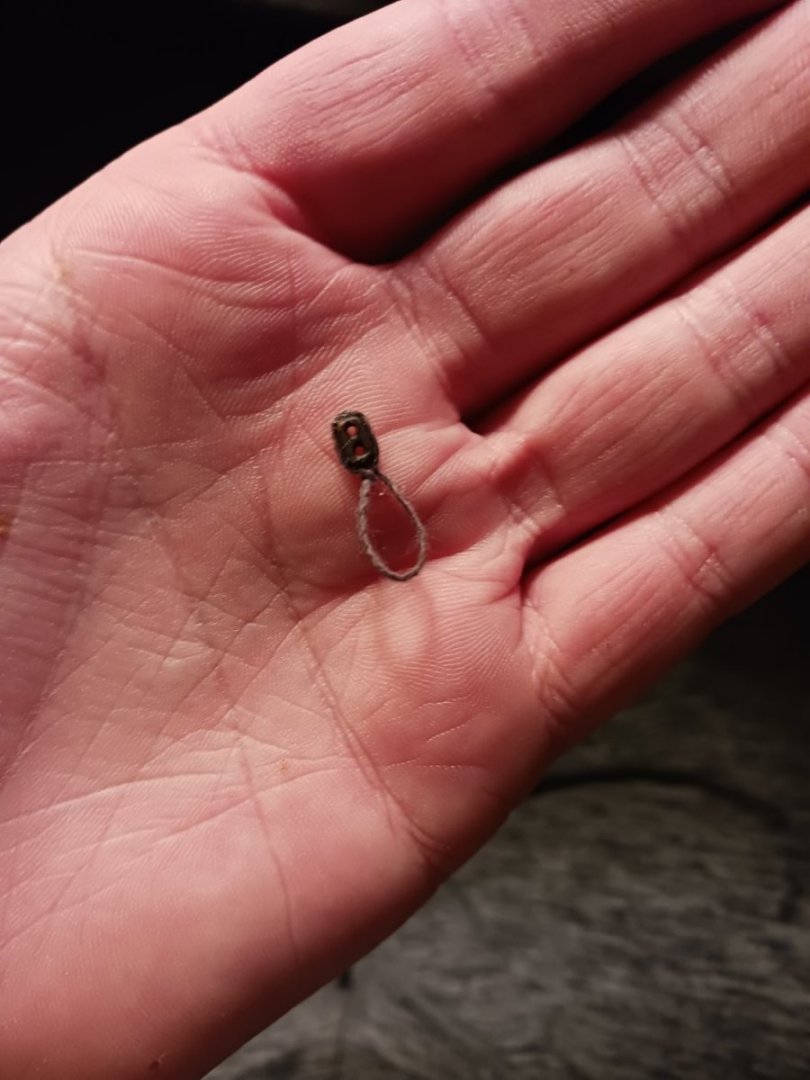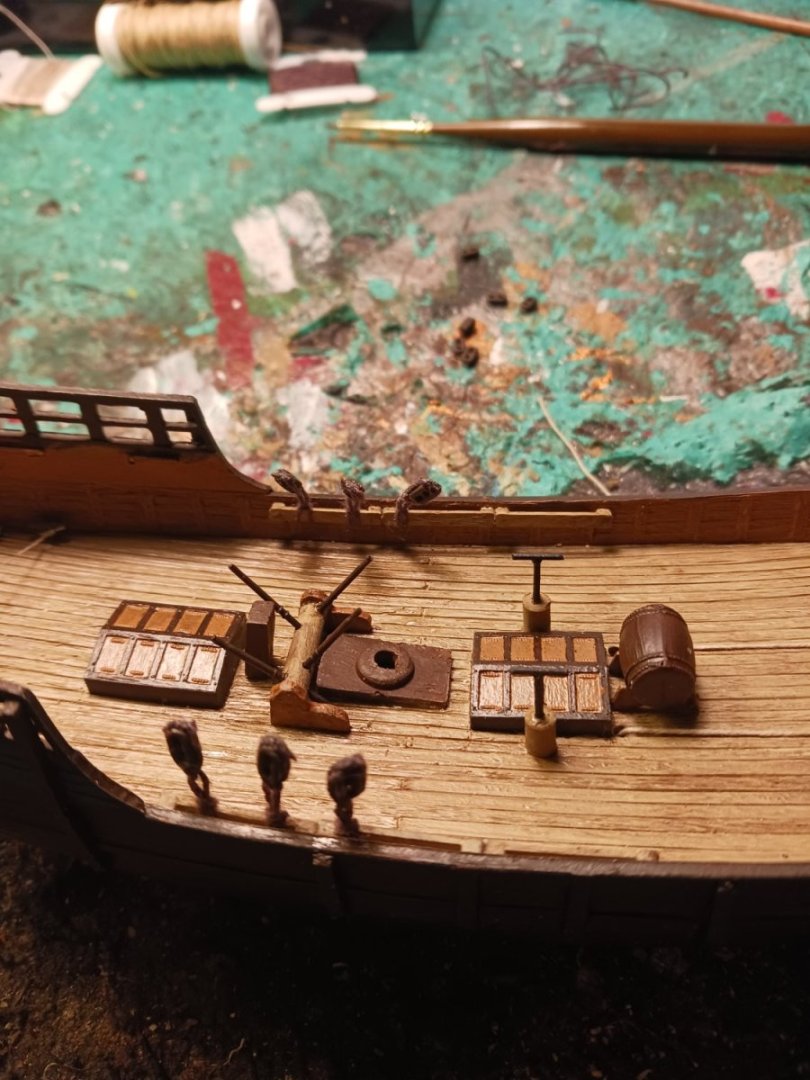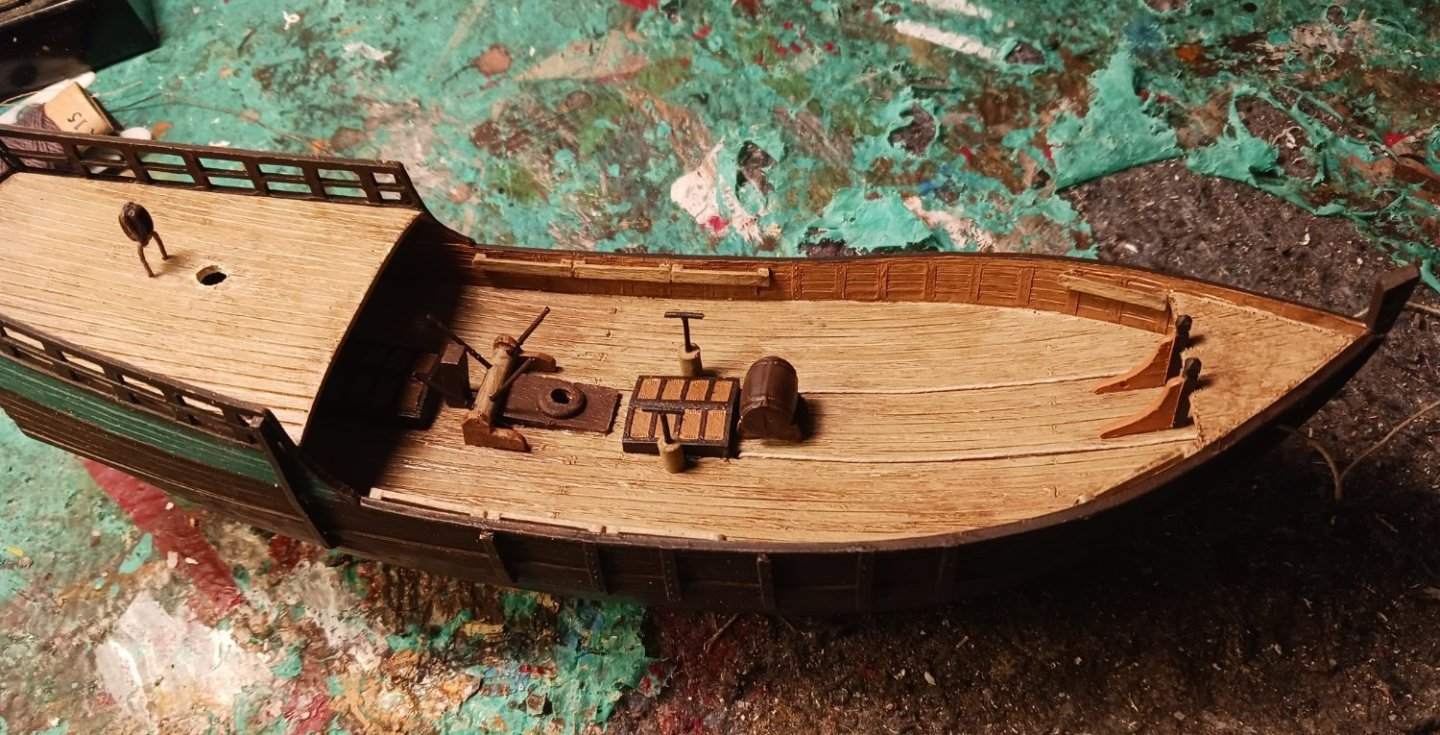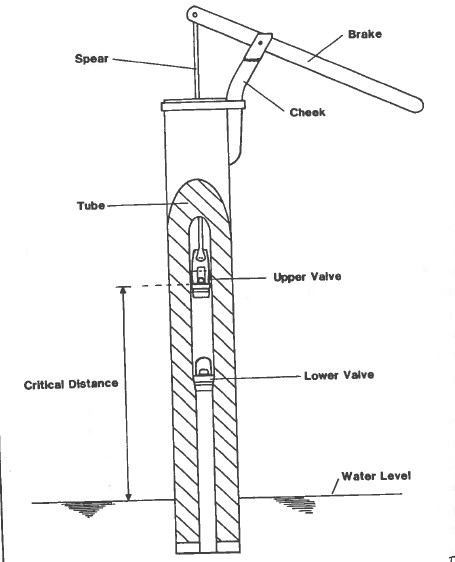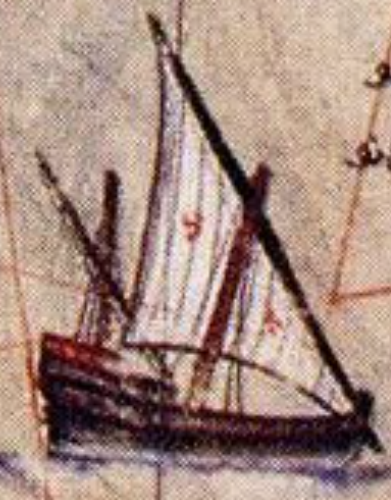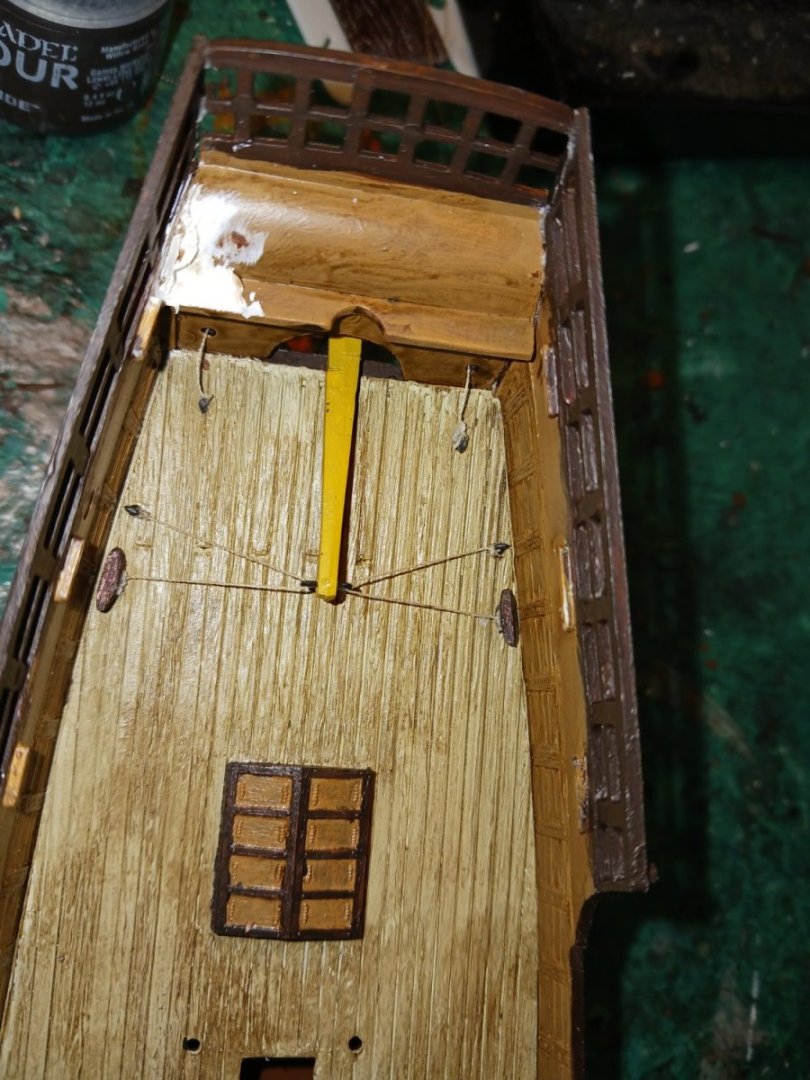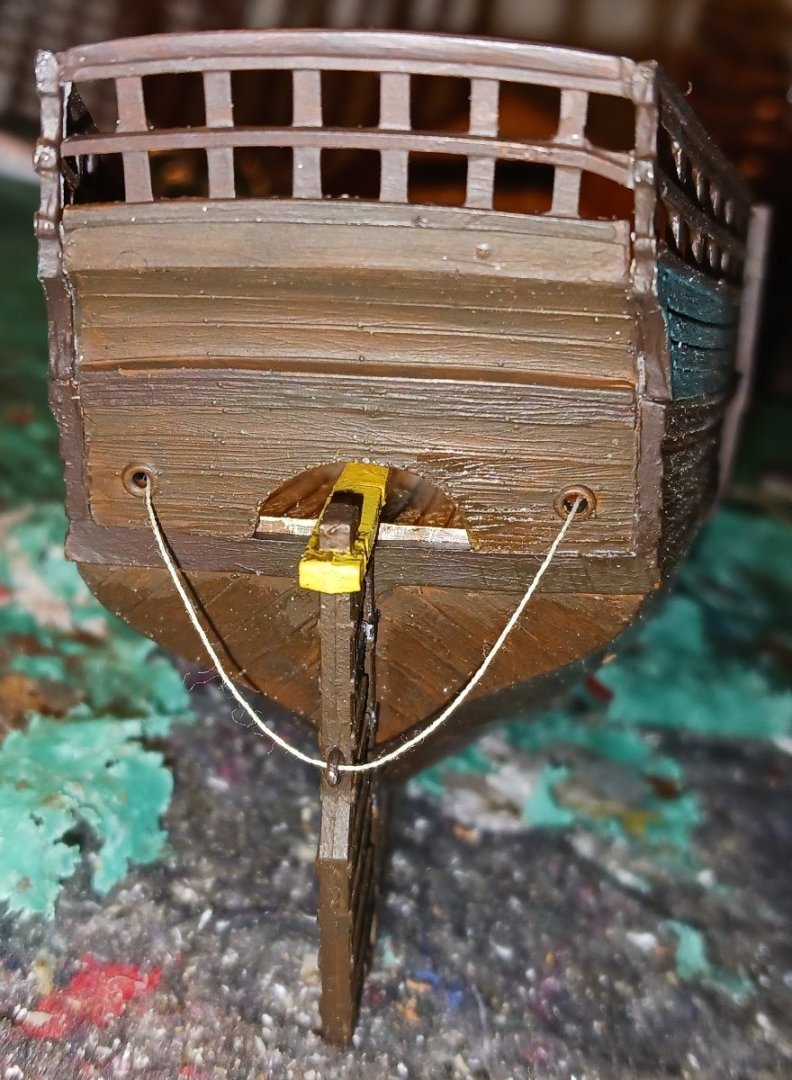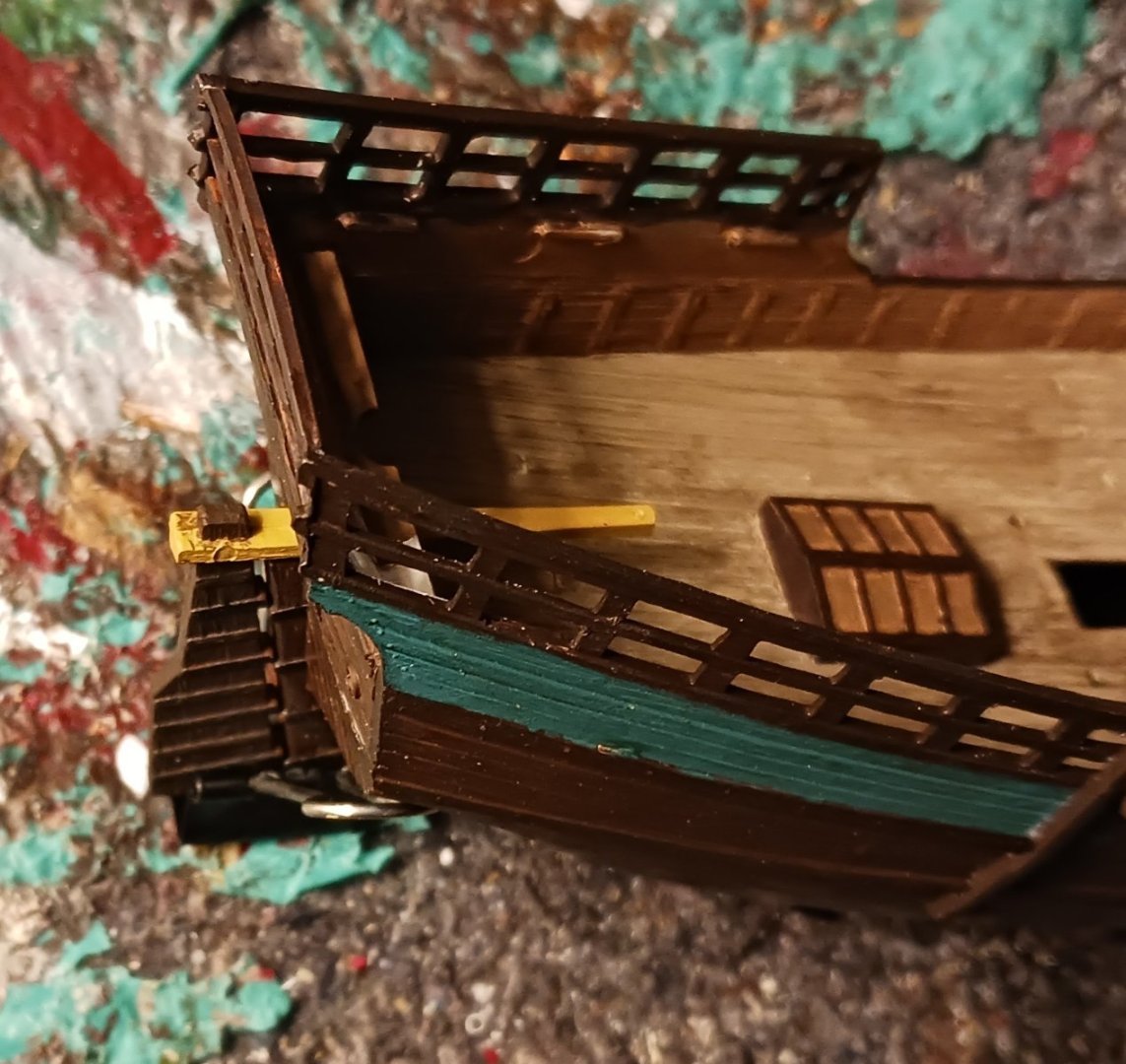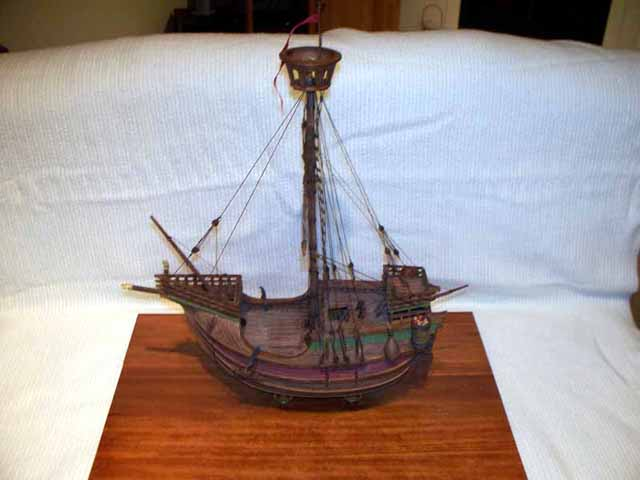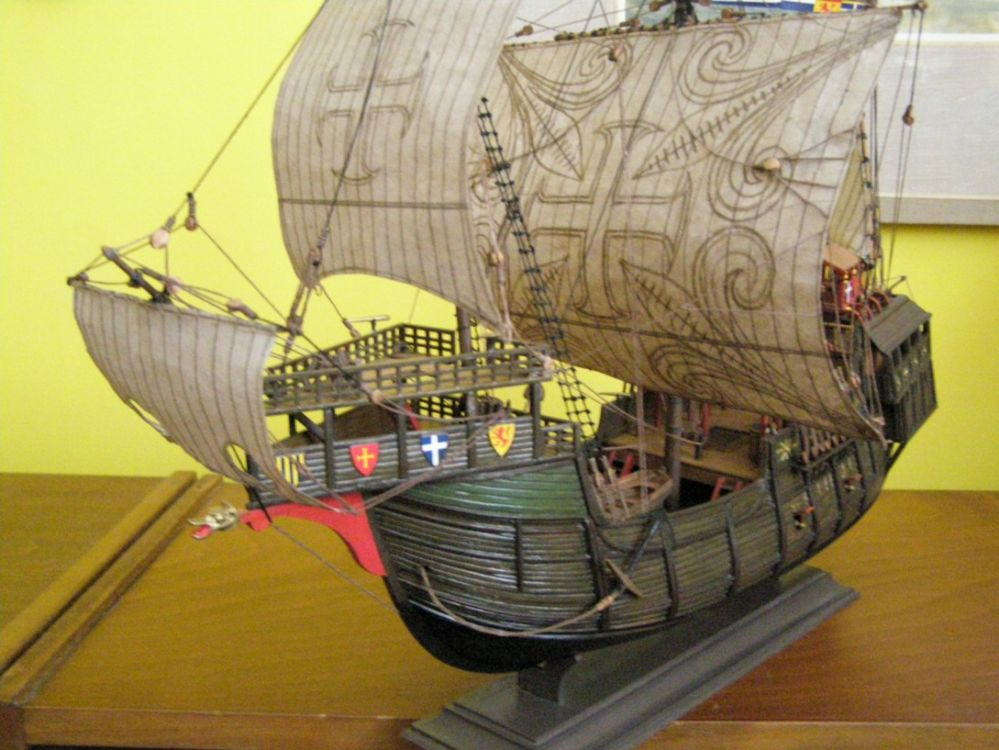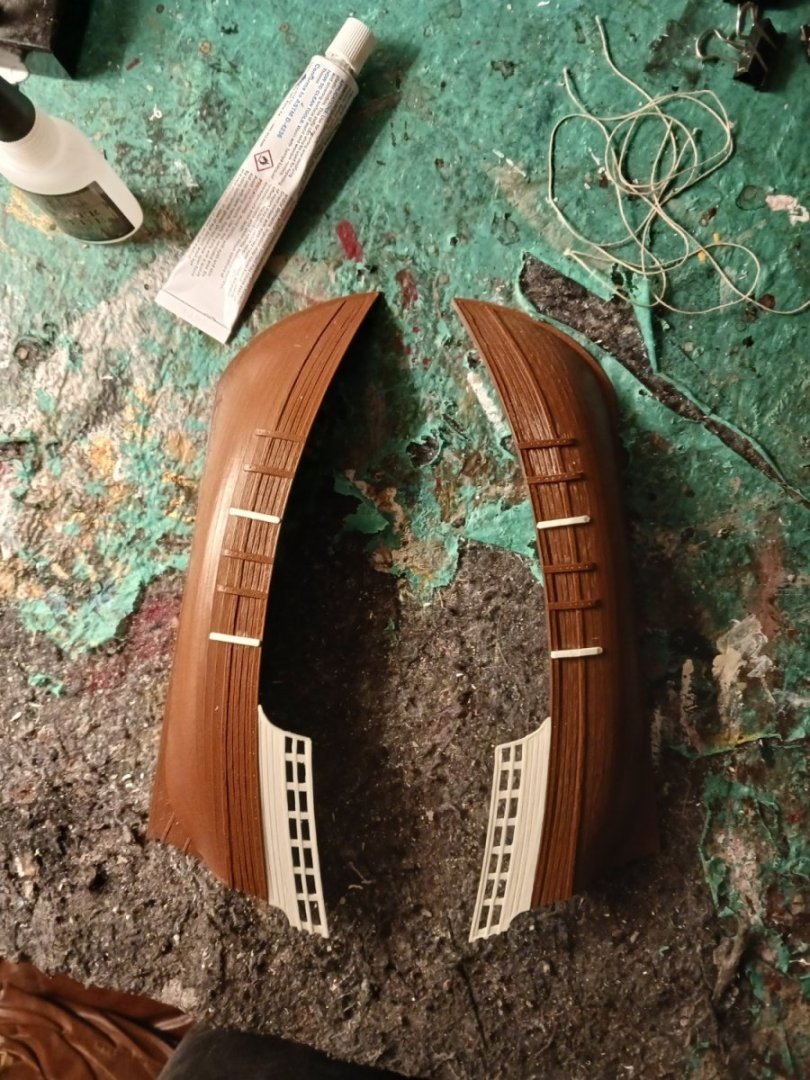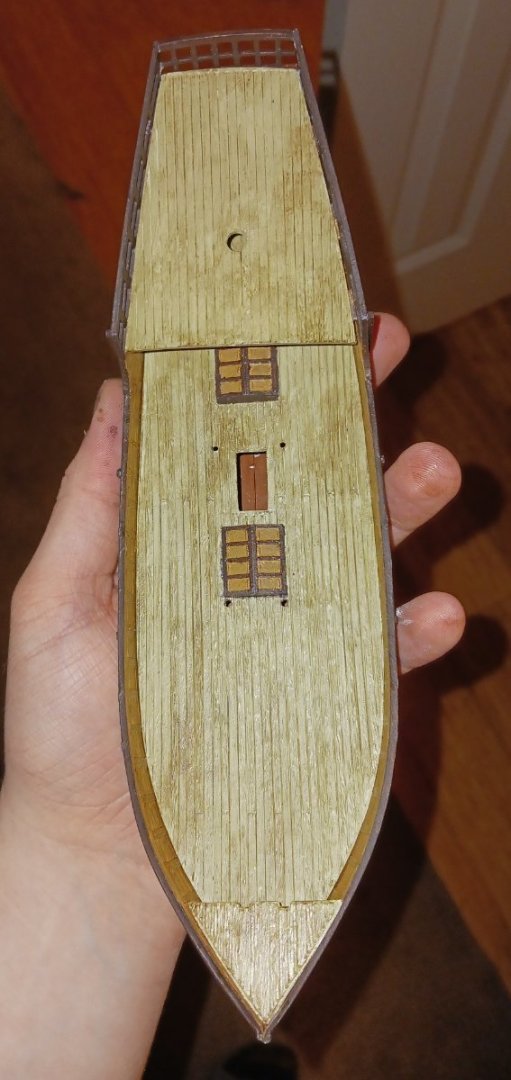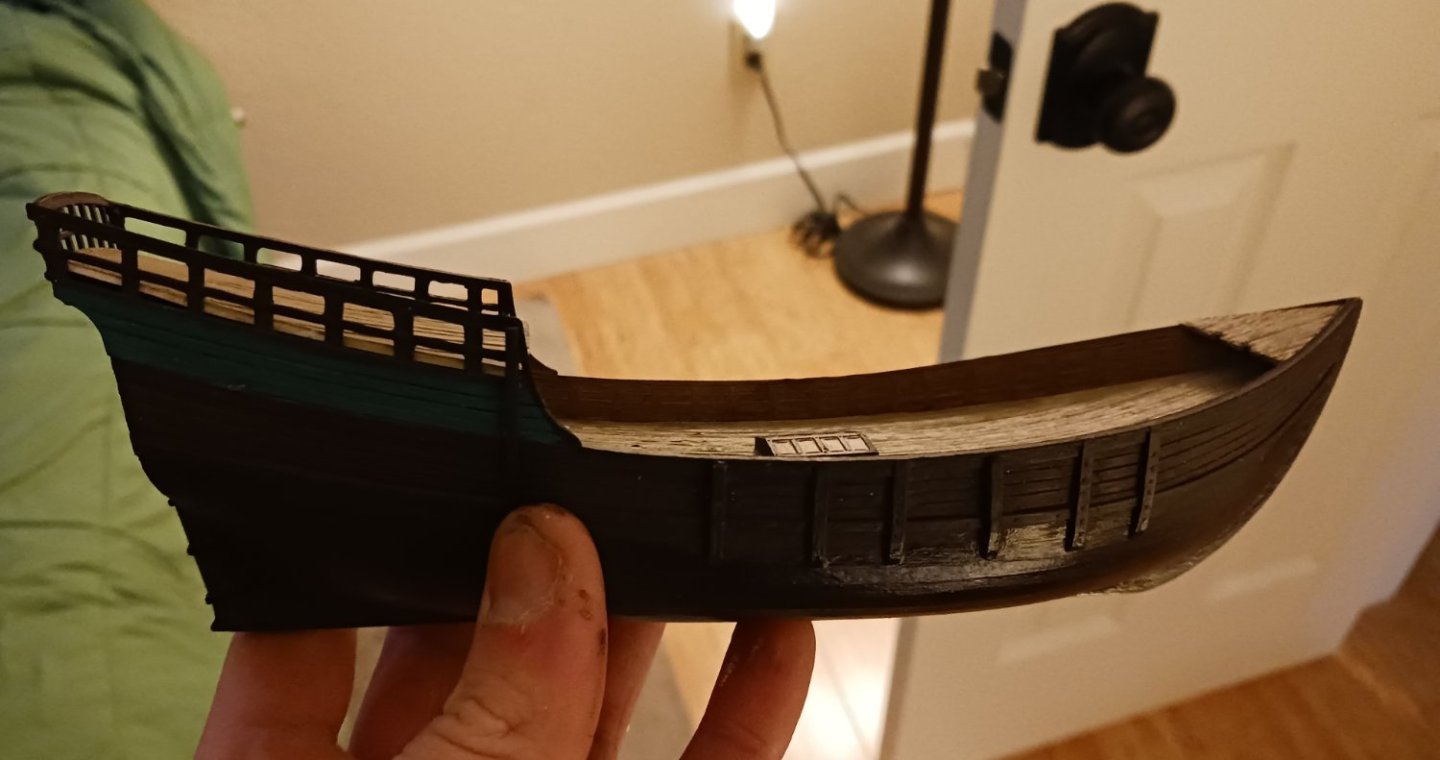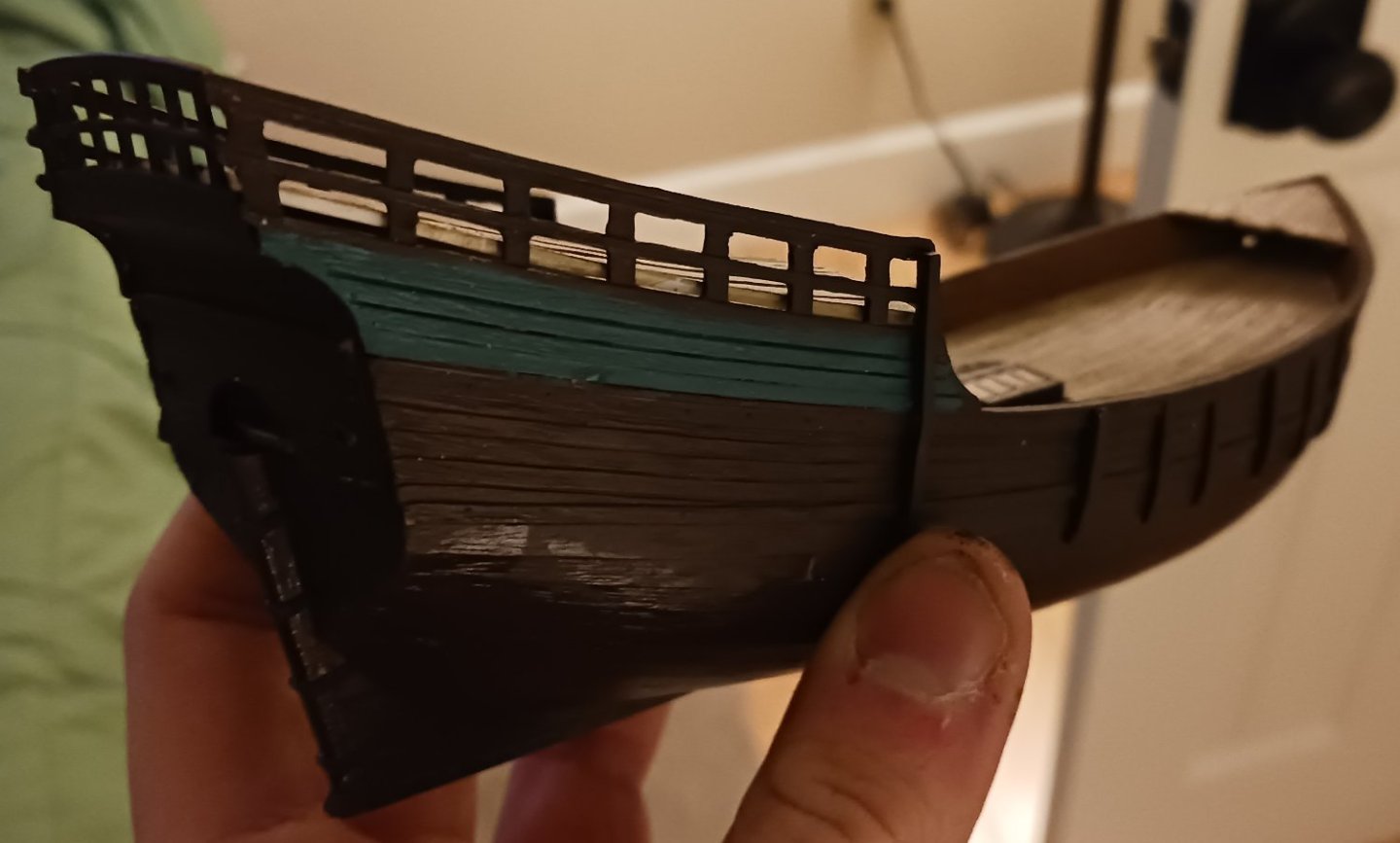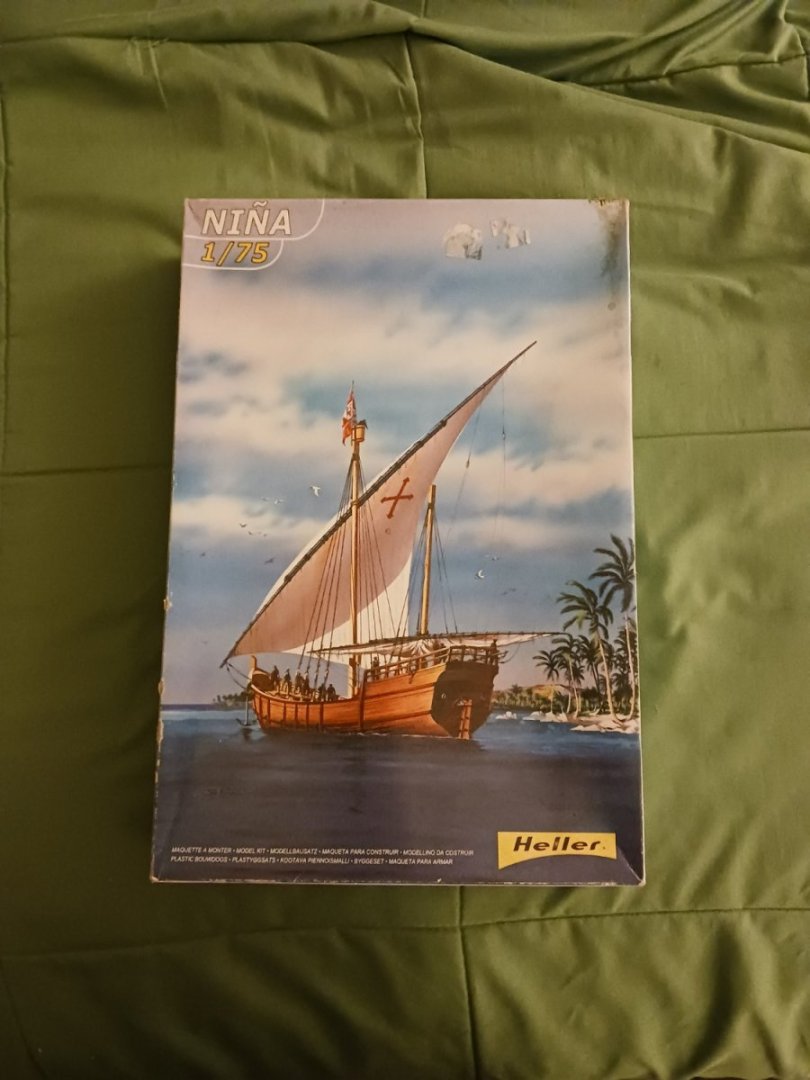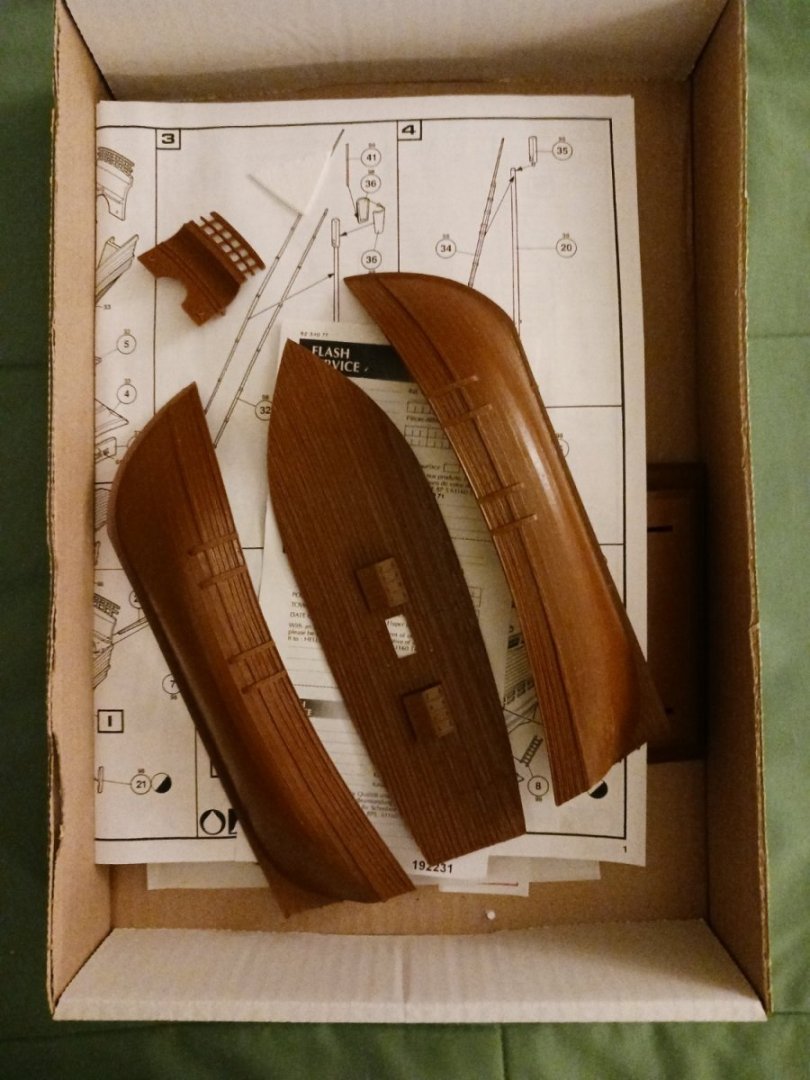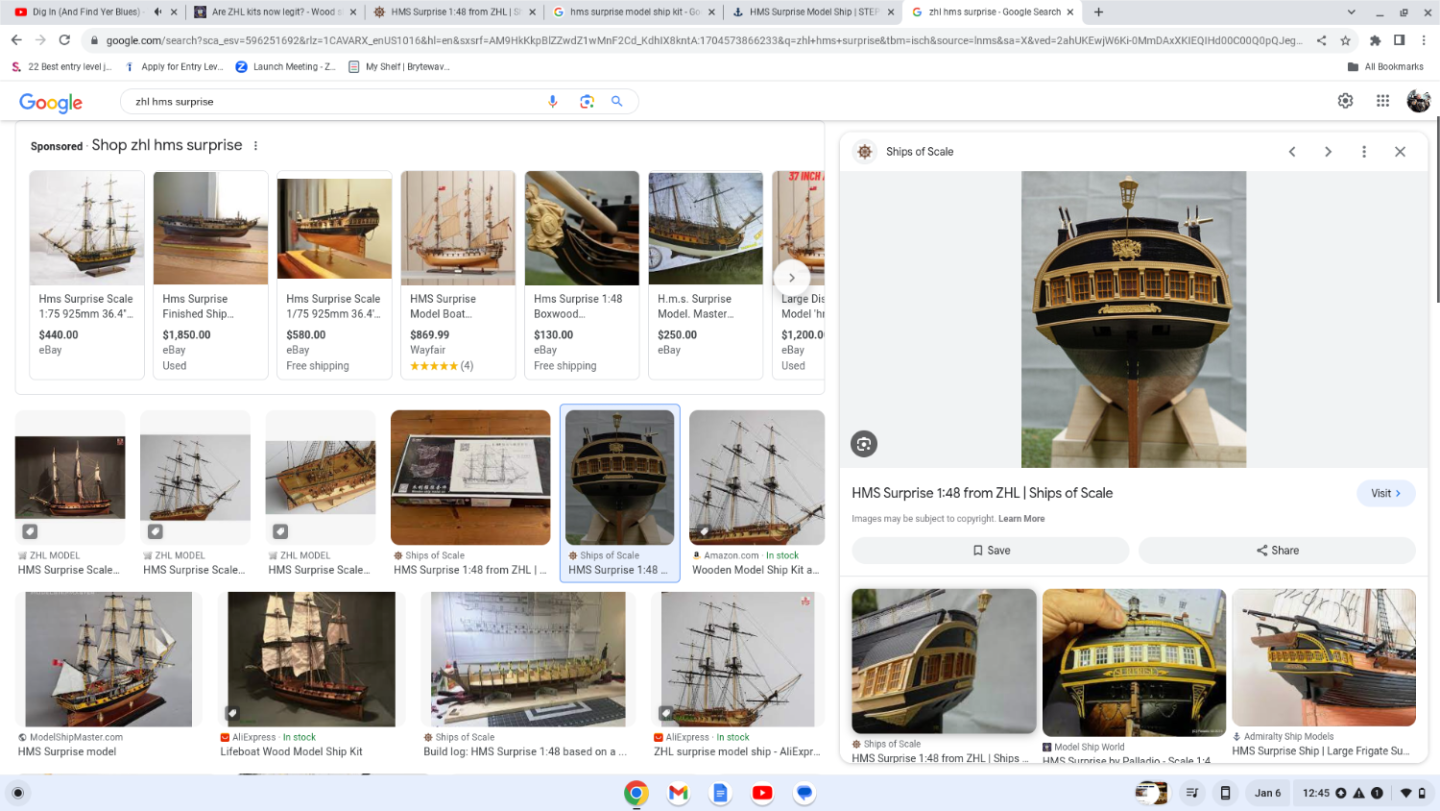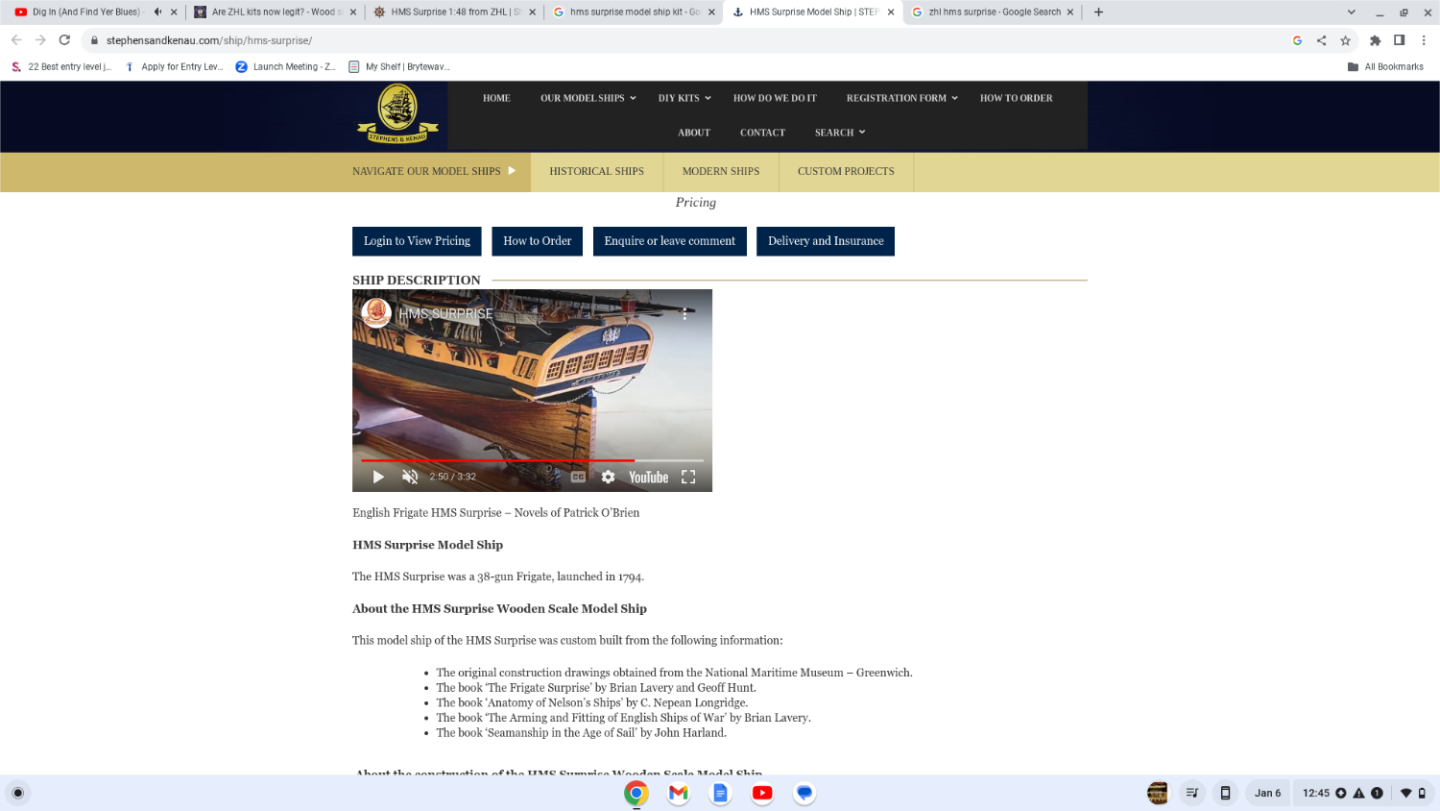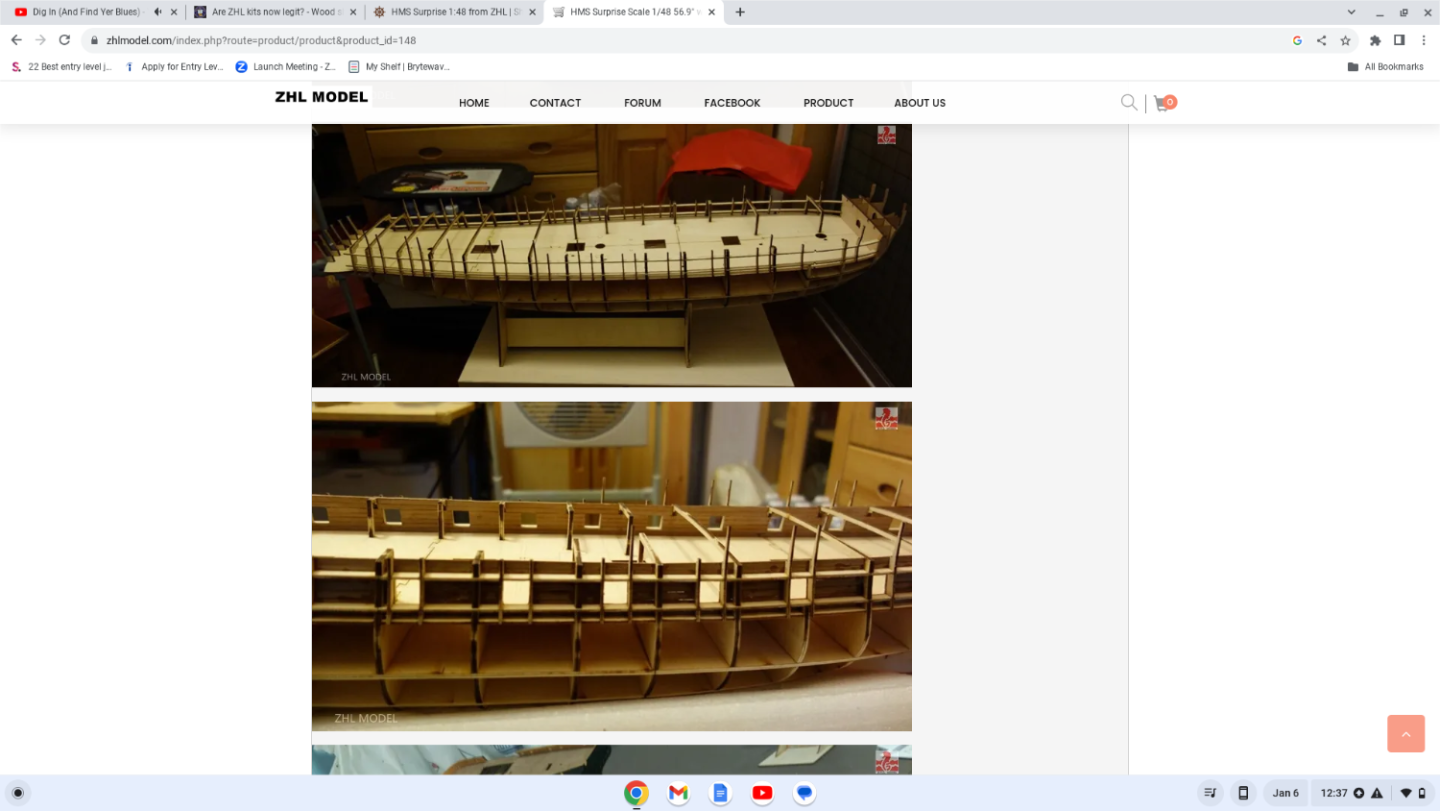-
Posts
1,407 -
Joined
-
Last visited
Content Type
Profiles
Forums
Gallery
Events
Everything posted by Ferrus Manus
-
These are the rest of the components for the shrouds: If you think you'll ever find a painting of any medieval ship that's accurate and detailed, just throw in the towel and go home. However, we think we know how late medieval shrouds were attached to the mast. This is a picture painted by our wonderful friend Vittore Carpaccio in 1490. Look at the top of the mizzen mast of the first carrack closest to us. It seems as though the shrouds were attached the normal way, then wrapped with lashings around the mast, probably as preventers.
-
See my Sao Paulo. I came to the same conclusion! More on that later.
- 508 replies
-
That plank was found to be suffering from dry-rot before the voyage, and was replaced, hence the cleaner appearance.
- 508 replies
-
The structure of the shrouds are, from top to bottom, the shroud line itself, the toggle with a loop around it, the upper block with a loop slightly bigger, the lanyard, and the looped lower block.
-
Alright, today i finished the deck fittings for the Sao Paulo. The scratch-built pieces on the deck are the main halyard knight, the windlass, and the pumps. If you are wondering about the reasoning behind me using a block for the mizzen halyard instead of a knight, this is because a knight would have to extend all the way down to at least the main deck, and that isn't possible as anything extending down past the level of the quarterdeck aft of the mast would foul the tiller. This is the mechanism that was used on ships in the 16th century. On the ship is a more realistic solution for the 15th century handle. Now the next issue. Neither mast is properly stepped. For this reason, i can choose any rake i want for both. The mainmast is stepped considerably aft of what i think is reasonable, but i have a solution. Almost all the caravels in this map from 1513 show the mainmast raked significantly forward. This is likely following a tradition in earlier caravels, and the even earlier Mediterranean tradition of 12th-13th century fore-and-aft rigs.
-
The shroud loom that Heller gives you is worthless, and the deadeyes are absolutely unusable. Buy aftermarket deadeyes and rig the shrouds and ratlines using techniques on MSW.
-
This is why i decided to add the tackles. The reason i know (or at least highly suspect) tiller tackles were used on carracks is due to their massive size- controlling the rudder without them would be impossible. I guess if there's one part of the ship that won't be destroyed in a storm, it's the tiller. Also, owing to the Mediterranean tradition of brightly painting ships (that still exists today!), you'd think that the idea of at least some caravels being brightly painted is plausible. This is the steering tackle: I also rigged the preventer for the rudder: It would be nice if that stayed on the ship.
-
The tiller on this model is very long. So long, in fact, that on the real ship, it would be no more than six inches away from fouling on the mizzen mast and being rendered entirely nonfunctional. At 1/1 scale, the tiller would also be about 6 inches square at the tip. This begs the question: Is there any evidence for the use of tiller gear on caravels in the 15th century? I am tending toward adding it on this build, owing to the impracticality of not having it. We also know it was used on carracks, which adds credence to the "yes" route.
-
The more i think about it, Heller is probably the reason we can't have good, historically accurate plastic models of 15th century carracks. They ruined that with their ridiculous hull-reuse stunts and horrendously inaccurate reconstructions.
-
My decision to paint the upper works a blue-green color comes from the other plastic models i have seen constructed of 15th-century Iberian vessels. There is likely no evidence for or against the use of this practice on the real ships, but this is kind of a little homage. The paint i applied to the model was more blue than the examples i have seen. This is probably the only thing on this model that doesn't have a clear origin in the Middle Ages. However, there are remnants of paint on the Mataro Carrack. Granted, that paint was red and in a different place.
-
Can't tell if this is good or bad. Anyway... Fun fact: This model has a grand total of six (6) locator pins. By far the most common complaint i read about this kit was in regard to part misalignment. That being said, the alignment of parts was not worse than most of the ships i've built, and significantly better than some. Even the upper works, which were to be aligned entirely by eye, fit together well. The transom, which is the most ridiculously challenging part to fit on any plastic model ship, went on without a major issue. With that exception out of the way, the other two most common complaints i read were that the model had almost no detail, and looked more like a toy than a model when completed. Both of these issues could be resolved with any amount of effort put into the paintwork:
-
Bingo! The sterns on the ZHL 1/48 model and the Model Shipyard kit, available in either 1/78 or 1/60, are identical. SHAMEFUL!!
-
This is a screenie from ZHL's actual site showing the frames of the ship. @chris watton This looks like something you would design. Have you ever designed a Surprise, regardless of scale? They may have scaled it up.
-
Someone on Ships of Scale bought the ZHL kit and from looking at it, it's likely that they stole it from AL. There are a couple differences, like in how the parts are laid out, and a couple parts are different, so it might be a different kit. The guy's name on SoS is Jweb.
-
Steven, i (as a severe type A hemophiliac) find your new signature quote very fitting. It really isn't a ship model until you've bled on it, and it really isn't a ship modeling tool until it's caused you to bleed. The worst offenders are my xacto knife (obviously) and, get this, my pin vise.
-
It does at the aft above the quarterdeck. I was talking about using stringer-like rails mounted to the bulwark stanchions just like you have on your nef.
- 508 replies
-
Upon seeing what they gave me in the instructions, i'm probably ditching their parts and doing what you did on the nef.
- 508 replies
-
I'm pretty sure nautical archaeologists are also quoted as saying they have no clue what that capstan was actually used for.
-
Granted, cogs were much wider and heavier in terms of displacement than caravels. I would think that a single windlass would be fine. Plus, i only ended up using one windlass on my Nef, and the crew would weigh anchor by hand. This would be much harder to do on a caravel, though. I know woodrat put a windlass and capstan on his carrack, but that's easy as his ship would have been almost 4 times as large as mine.
-
So those are for the shrouds? Got it. On my caravel, i will simply have the lanyard originate from the upper block. The kit gives me bulkhead rails to tie stuff to (you can't prove me wrong 😜), so the issue of finding a place to mount the lower blocks and tie stuff off is no big deal.
- 508 replies
-
I see the capstan, and good luck fitting one on a caravel. I am gravitating toward putting the windlass behind the mast and figuring out what to do with the anchor gear later. I might put a cross beam athwartship at the fore and wind it around that. More than that, i'll need heavy bitts at the fore to make up for the lack of catheads. The other thing is where to put the anchor cables. Would they have used nippers and a messenger cable, or do you think they would have wrapped the anchor cable around the windlass? I'm going with the former as this windlass is multipurpose.
About us
Modelshipworld - Advancing Ship Modeling through Research
SSL Secured
Your security is important for us so this Website is SSL-Secured
NRG Mailing Address
Nautical Research Guild
237 South Lincoln Street
Westmont IL, 60559-1917
Model Ship World ® and the MSW logo are Registered Trademarks, and belong to the Nautical Research Guild (United States Patent and Trademark Office: No. 6,929,264 & No. 6,929,274, registered Dec. 20, 2022)
Helpful Links
About the NRG
If you enjoy building ship models that are historically accurate as well as beautiful, then The Nautical Research Guild (NRG) is just right for you.
The Guild is a non-profit educational organization whose mission is to “Advance Ship Modeling Through Research”. We provide support to our members in their efforts to raise the quality of their model ships.
The Nautical Research Guild has published our world-renowned quarterly magazine, The Nautical Research Journal, since 1955. The pages of the Journal are full of articles by accomplished ship modelers who show you how they create those exquisite details on their models, and by maritime historians who show you the correct details to build. The Journal is available in both print and digital editions. Go to the NRG web site (www.thenrg.org) to download a complimentary digital copy of the Journal. The NRG also publishes plan sets, books and compilations of back issues of the Journal and the former Ships in Scale and Model Ship Builder magazines.


